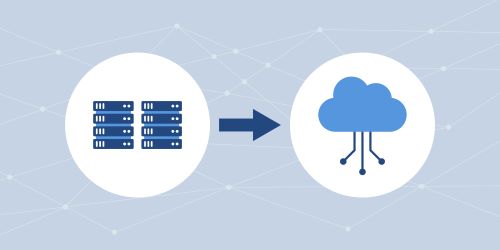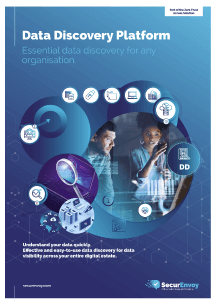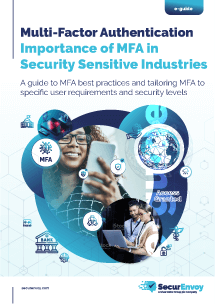

How to Maintain Data Integrity: 5 Data Integrity Best Practices
Data-driven companies are three times more likely to report significant improvements in decision-making, according to PwC. But what if your data is inaccurate or there are inconsistencies with data in different data silos? How can you be sure that the decisions you are making are accurate and not leading to bad business decisions? If your customer records are inaccurate, how do you know that you are not leaving your company open to bad compliance practices? Are you confident you are following data privacy regulations for sensitive personal information, or that the information you have is correct and available for data subject access requests (DSARs)?
For smaller businesses with limited numbers of staff, or larger businesses with busy IT teams, data integrity, i.e. managing data and ensuring that it is accurate and kept safe can be a real challenge. But, with data integrity best practices and the right tools to assist, it doesn’t need to be.
Let’s take a look at some of the challenges and what you can do to improve and maintain data integrity in your business.
What is data integrity?
Just to make sure we’re on the same page, what do we mean exactly by “data integrity”?
Data integrity – refers to the overall accuracy, reliability and consistency of data as well its completeness and safety. Maintaining data integrity means making sure that your data is accurate and can be trusted throughout its lifecycle, from creation (or acquisition) to archival or destruction. To maintain data integrity means checking for errors and validity of the data and making sure that data is safe and only accessed by authorised users.
Data integrity encompasses both data quality and data security.
Data quality ensures that information is accurate, complete and reliable, but “data integrity” also covers how data is governed, including how it is entered, stored, transferred, etc.
The goal of data security is to protect information from insider threat and outside attacks, with measures such as data classification, permissions, identity and access management and threat detection.
So, data integrity is an umbrella definition, embracing both data quality and data security, and including data governance practices to ensure the proper retention and destruction of data, especially in compliance with relevant industry and government data privacy and other regulations.
Why it is important to maintain data integrity
As we suggested at the beginning of this article, maintaining data integrity underpins the business, ensuring good business decision-making, but it can also help improve customer service and ensure that your business is fully compliant with data privacy regulations. Improving your data integrity best practices will result in:
- More accurate decision-making and reporting. Poor decision-making based on inaccurate data can affect the bottom line.
- Compliance with data privacy regulations. Non-compliance with data privacy regulations such as GDPR can result in fines for data breaches – if a customer is not able to access correct information, or you are not able to fulfil a DSAR in time, for example. Ensuring data is accurate will help you to fulfil DSARs more efficiently and comply with regulations.
- Better customer interactions and transactions. Improved accuracy in personal, sensitive and personally identifiable information can help, not only with ensuring your business is compliant, but also in knowing your customer and providing tailored offers and services to them.
- Safe and secure data. Again, any loss of information through a data breach, can result in data privacy fines and damage the reputation of your company. Data integrity gives confidence that any data you hold is secure, for employees, customers and stakeholders.
If your data is not accurate, trustworthy and safe then it can become a liability.
How data integrity becomes an issue
The road to data integrity is paved with good intentions. So, how can data become a liability?
- Human error: Even with the best-laid plans of mice and men, manual data entry (and the inadvertent click of a mouse) can lead to inaccuracies – errors in data entry and the collection and transfer of data. Inadequate data entry training can lead to issues alongside poor auditing.
- IT Systems: IT systems need to be maintained frequently. Inadequate maintenance and misconfigurations can lead to security errors and compromised hardware. You may have multiple analytical tools and are not able to integrate data between different systems. You might be reliant on legacy systems, as well as cloud applications, and are unable to keep track of data in both.
- Lack of adequate security: Data integrity can also be compromised through malicious acts such as malware, hacking and phishing.
The challenges businesses have to maintain data integrity
Even with the best of intentions, efforts to manage and secure data are often compromised through other challenges within the business, such as limited resources and budgets, legacy systems and manual processes. For example, you may find that:
- Your IT or data team is managing a lot of projects which puts extra strain on already stretched resources managing IT systems, security and data analytics.
- Teams in the front line of data entry, in customer services, for example, are already at capacity so any additional strain can lead to inaccuracies.
- The business still relies on manual processes and hasn’t yet implemented any tools to manage data.
- Legacy applications are at the heart of your business, and you haven’t yet moved to the cloud where you might be able to take advantage of cloud tools.
- Budgets are small and you need a cost-effective solution to help you manage your data. Data Loss Prevention solutions are out of reach and too complex to implement.
But, despite the challenges, there are some data integrity best practices and tools that you can use to simplify the process and make sure that you are prepared.
5 data integrity best practices
Here are 5 key data integrity best practices we recommend in order to maintain data integrity:
- Validate Data – create validation rules and validate your data on input. For example, you could create alerts to be sent to the data creator when they are storing sensitive data, or if they are trying to store sensitive data somewhere it shouldn’t be.
- Process Data – cleanse data by searching for old data and duplicates. You can help bring down the cost of cloud storage by cleansing data to ensure that there are no duplicates or data over a set number of years old.
- Maintain Data – check data on an ongoing basis against your validation rules. Create reoccurring search tasks to highlight sensitive data as and when it is created. Keep an audit trail and back up your data.
- Protect Data – implement security controls such as user authentication. Keep antivirus software up to date and ensure that all employees are aware of phishing threats and inadvertent data loss.
- Employee Training – develop a culture of data integrity with data entry and compliance training to ensure consistency. Make sure your employees receive regular data security best practices and phishing training and awareness. Appoint a data steward to manage data and oversee training.
With many smaller businesses relying on manual processes, and other larger organisations having complex environments and multiple databases, as we discussed earlier, managing data integrity can be a challenge. However, there are automated tools available to help support these data integrity best practices and maintain data integrity without having to deploy expensive data loss prevention solutions.
Benefits of using data discovery tools to support data integrity best practices
Data discovery tools can be implemented rapidly to identify, validate and maintain data integrity across the whole business environment. Once you’ve taken care of discovering, validating and managing your data with an automated data discovery tool, more time can then be invested in implementing or updating security controls alongside delivering employee security and compliance awareness training.
Following the right data integrity best practices and implementing automated data discovery tools (like SecurEnvoy Data Discovery), can help achieve many benefits.
From an IT perspective you can:
- Identify and understand the data you have, and where it resides across your business, easily and effectively.
- Once you have understood your data you can create controls and give the right access to those people that need it. Controls will be in place to protect sensitive data and make sure that it is not being miscategorised or stored improperly.
- Maintain the accuracy of your data throughout its entire life cycle (eliminating incomplete and duplicate records, tracing errors and recovering data).
- Improve system performance by eliminating excess storage for duplicate or outdated and inaccurate data.
From a data governance and business perspective you will be able to:
- Adhere to regulatory compliance – Safeguard sensitive and personal information of data subjects and customers. Your data will be easily traceable and in the case of DSARs data discovery tools will help speed up the response avoiding potential fines for inadequate regulatory compliance
- Maximise the value of data across your business – you will have accurate data available from multiple sources which you can make accessible for business decision-makers. More accurate and faster business analysis, whether your applications are in the cloud or legacy systems.
- Improve and personalise the customer experience – with accurate data on your customer base.
Being able to maintain data integrity is key for any business that wants to make accurate business decisions or keep a competitive edge in a fast-moving world, it is also imperative for meeting data privacy regulations and maximising customer service.
While there are challenges both to the business and busy IT teams in ensuring data integrity, easy to use and install tools are available to help automate the data management process. Tools such as SecurEnvoy Data Discovery, can help you to discover the data you have and maintain its integrity across the whole business, even across different databases, collaboration tools and in the cloud.
For IT, this means the manual processes that lead to bad data can be reduced (or eliminated), freeing up more time to concentrate on other of areas data integrity, such as securing and protecting data. Implementing data discovery tools will help the whole business (not just the IT or data governance department) to manage data better and reap the benefits of accurate information to provide better customer service, improved compliance and business value.
Published: 4 April 2024
Category: Industry Research
![]()
Data Discovery
Platform
(DD)
Data discovery across your digital estate.
Essential data discovery for any organisation.
Learn more about SecurEnvoy DD
Hear more from
our security
experts






